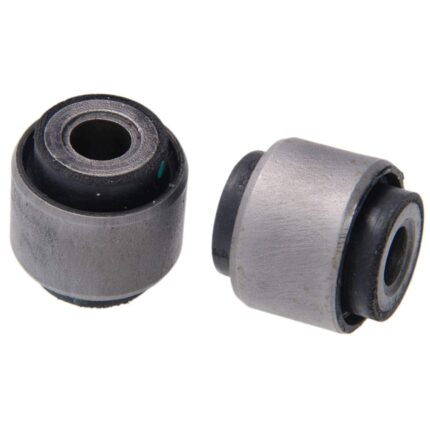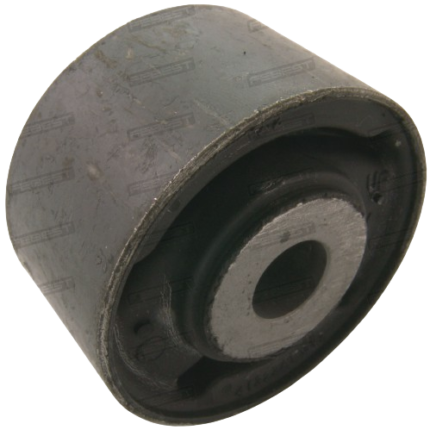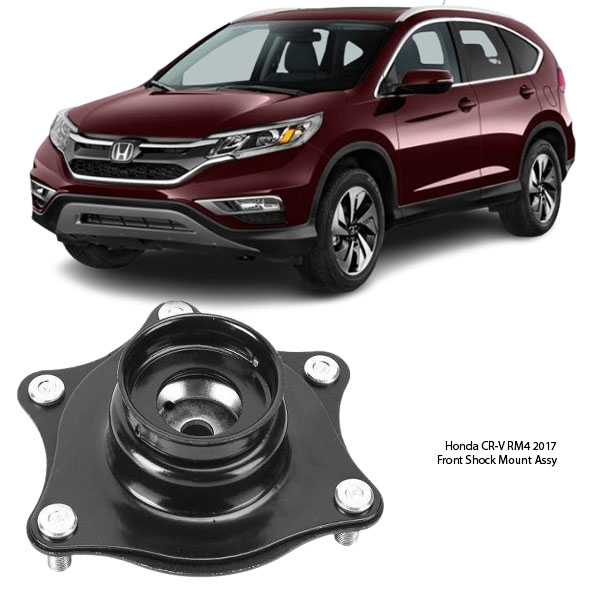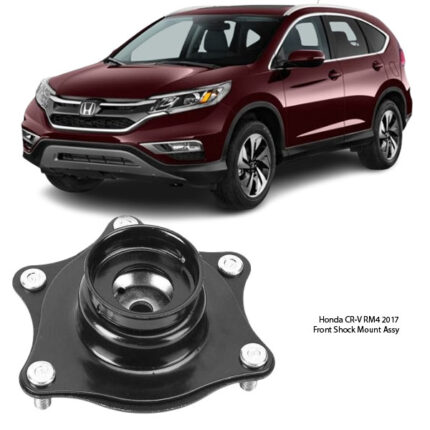Get Honda CRV RE7 Front Shock Mount Assy HSS-REF in Kenya
The shock mount assembly, also known as the shock absorber mount or strut mount, is a critical component in a vehicle’s suspension system that connects the shock absorber or strut to the vehicle’s chassis. It plays a crucial role in supporting the weight of the vehicle, absorbing road shocks and vibrations, and allowing for smooth and controlled movement of the suspension. Here’s an in-depth exploration of the shock mount assembly, covering its functions, importance, signs of wear or failure, and maintenance considerations.
Functions of Shock Mount Assembly
- Support and Attachment: The primary function of the shock mount assembly is to securely attach the shock absorber or strut to the vehicle’s chassis. It provides a stable mounting point that allows the suspension component to pivot and move in response to changes in road conditions while maintaining structural integrity.
- Vibration and Noise Isolation: Shock mount assemblies incorporate rubber or polyurethane bushings that act as cushions to absorb and dampen vibrations and noise transmitted from the suspension to the vehicle’s body. This helps reduce the amount of noise and harshness experienced by occupants inside the vehicle, improving overall ride comfort.
- Alignment and Suspension Geometry: The shock mount assembly plays a role in maintaining proper alignment and suspension geometry. It helps ensure that the shock absorber or strut remains in its correct position relative to other suspension components, preventing misalignment that could lead to uneven tire wear and compromised handling.
- Enhanced Handling and Steering Response: By maintaining suspension geometry and reducing body roll, the shock mount assembly contributes to improved vehicle stability, handling, and steering response. It helps the vehicle maintain traction and control during cornering and maneuvering, enhancing overall driving dynamics.
- Load Distribution and Structural Support: In addition to supporting the shock absorber or strut, the shock mount assembly helps distribute the vehicle’s weight and forces exerted during braking, acceleration, and cornering across the suspension system and chassis. This ensures that the suspension components operate efficiently and withstand the stresses of daily driving.
Importance of Shock Mount Assembly
The shock mount assembly is crucial for several reasons:
- Safety: It plays a significant role in ensuring the safe operation of the vehicle by maintaining suspension integrity and stability, which are essential for optimal braking performance and control.
- Comfort: By reducing vibrations and noise, the shock mount assembly enhances ride comfort for occupants, making driving more pleasant, especially over uneven or rough road surfaces.
- Performance: Properly functioning shock mount assemblies optimize suspension performance, contributing to better handling, improved steering response, and enhanced overall vehicle dynamics.
Signs of Worn or Failing Shock Mount Assembly
- Knocking or Clunking Noises: Worn or damaged shock mount assemblies may produce knocking, clunking, or rattling noises, particularly when driving over bumps or uneven road surfaces. This indicates that the mount bushings or bearings may have worn out, allowing excessive movement of the shock absorber or strut.
- Vibration and Steering Issues: A failing shock mount assembly can lead to increased vibration felt through the steering wheel or vehicle chassis, especially at higher speeds. This can affect steering precision and stability, making it harder to maintain control of the vehicle.
- Uneven Tire Wear: Misaligned or worn shock mount assemblies can contribute to uneven tire wear, typically seen as excessive wear on the inner or outer edges of the tires. This not only compromises tire lifespan but also affects vehicle handling and fuel efficiency.
- Visible Damage or Fluid Leakage: During visual inspection, check the shock mount assembly for signs of visible damage, such as cracks, tears, or corrosion. Fluid leakage around the shock absorber or strut may also indicate a seal or mount failure that requires immediate attention.
- Changes in Ride Quality: A degraded shock mount assembly can result in changes to the vehicle’s ride quality, including increased harshness or discomfort when driving over bumps or rough roads. This diminishes overall driving comfort and indicates potential suspension issues.
Maintenance and Replacement
- Regular Inspection: Include shock mount assemblies in routine suspension inspections, particularly if you notice any signs of wear or performance issues. Early detection of worn or failing components allows for timely replacement and prevents further damage to the suspension system.
- Timely Replacement: Replace worn or damaged shock mount assemblies promptly to restore suspension performance and ensure vehicle safety and comfort. Use high-quality OEM or aftermarket parts designed for your vehicle’s specific make and model to ensure proper fitment and durability.
- Professional Installation: Consider having a qualified mechanic or automotive technician perform the shock mount assembly replacement, especially if it requires specialized tools or equipment. Proper installation ensures that the assembly is securely mounted and aligned, maintaining suspension integrity and performance.
- Alignment Check: After replacing shock mount assemblies, perform a wheel alignment to ensure proper suspension geometry. This step optimizes vehicle handling, tire wear, and steering response, ensuring a safe and comfortable driving experience.
Follow us on Facebook for more parts.




